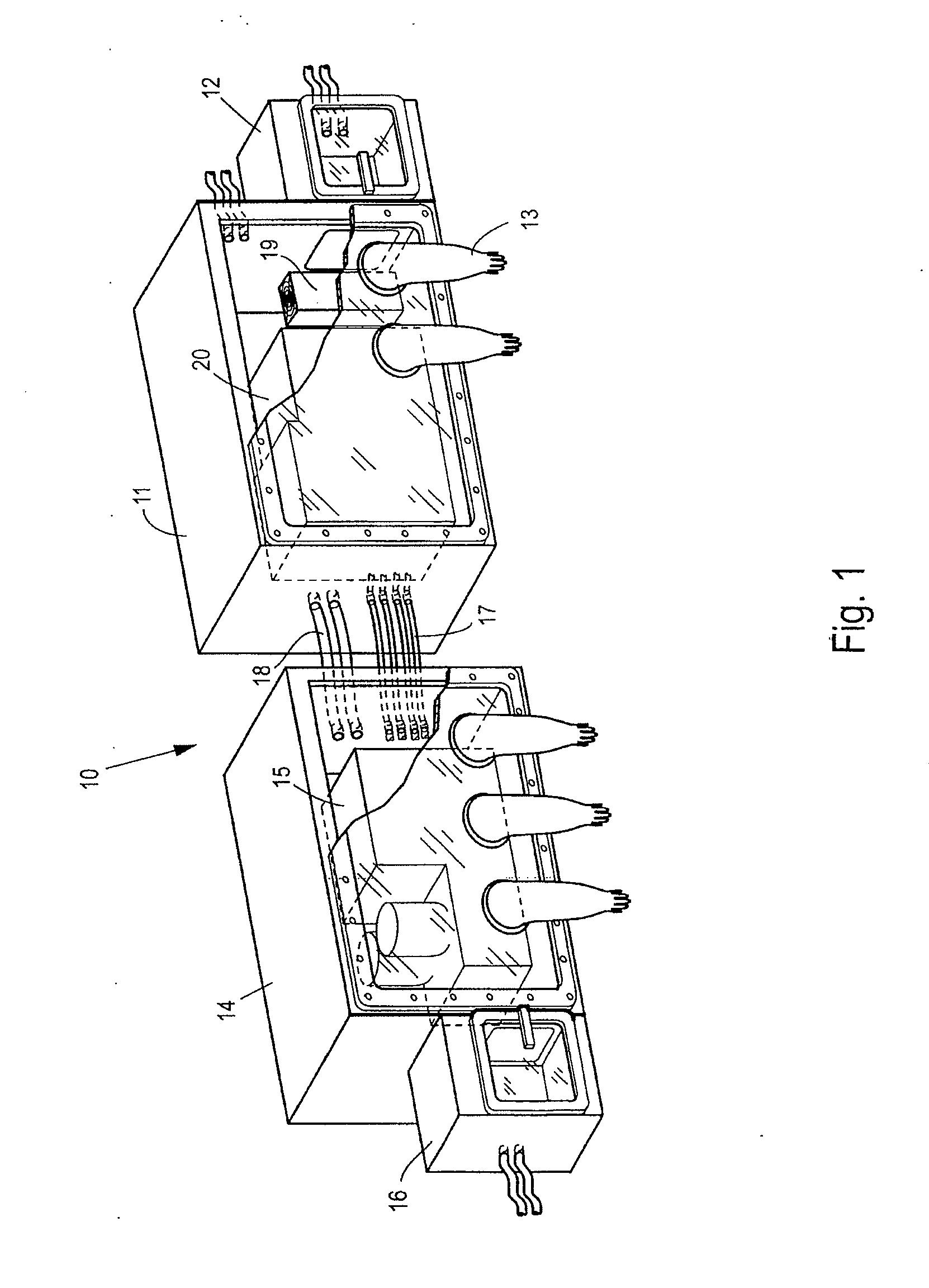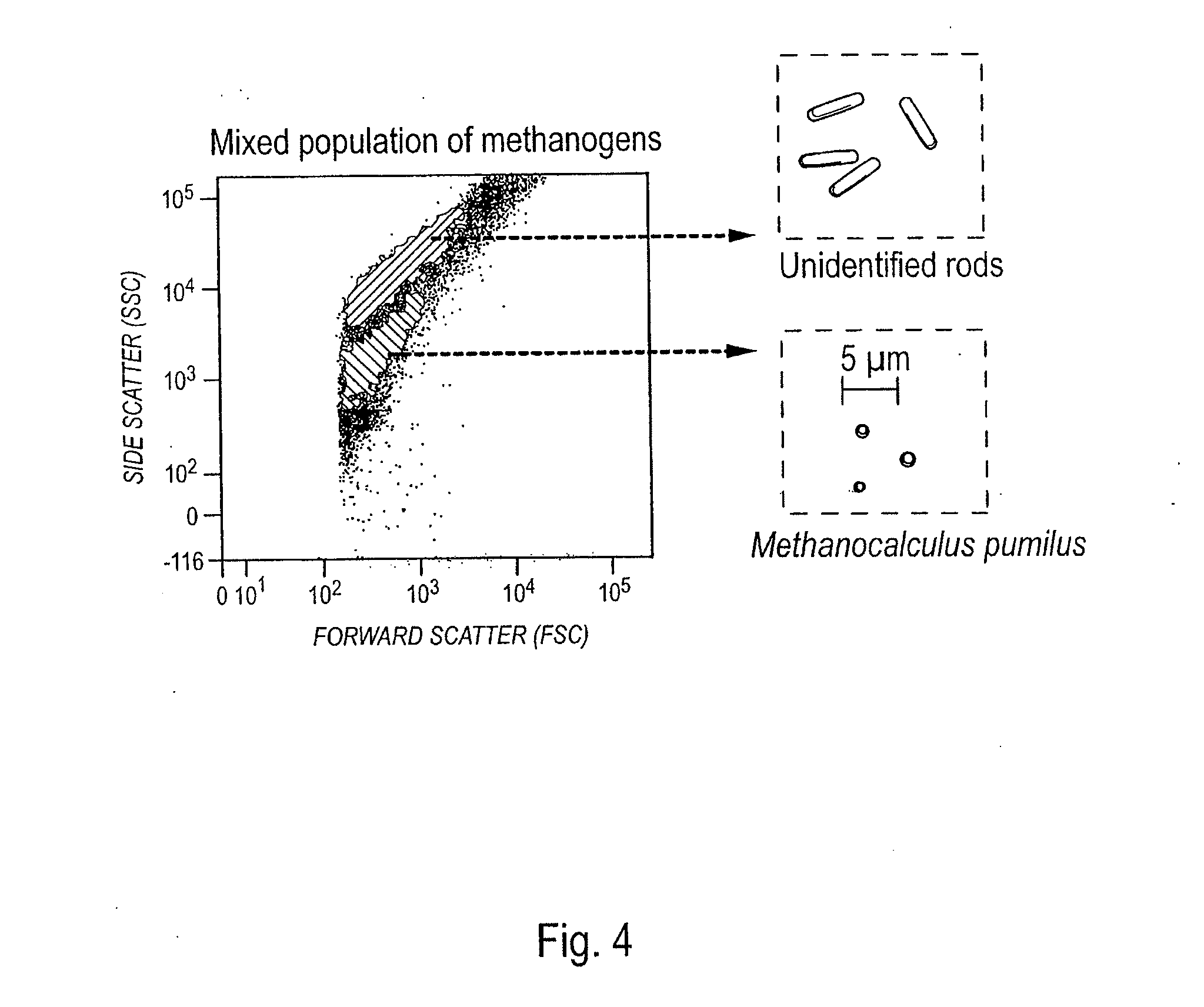System and methods for anaerobic environmental microbial compartmentalized cultivation
a technology of anaerobic environment and compartmentalization, applied in the field of environmental microbiology, can solve the problems of unattractive encasing in a cell sorting system, high speed cell sorters, and inability to adapt to the environment, and achieve the effect of high throughput isolation
- Summary
- Abstract
- Description
- Claims
- Application Information
AI Technical Summary
Benefits of technology
Problems solved by technology
Method used
Image
Examples
example 1
Cultivation of Methanogens
[0051]An enrichment for the cultivation of methanogens was established using artificial media (Table 1) and a H2:CO2 as carbon and electron donor source. Cells from coalbed methane well water were inoculated into an artificial medium, and after 4 weeks of incubation a variety of cell morphologies appear in suspension. The samples were then plated onto agar media according to standard methods for culture purification. After 4 weeks colonies appear and were transfer again into liquid media with the goal of isolate pure cultures followed by another round of plating. The cultures appear to contain only two cell morphologies, putatively methanogenic Archaea corresponding to rods and cocci that could be seen as discrete populations in the FACSAria based on the forward and side scatter and violet autofluorescence from the F420 chromophores (See FIG. 4). Cells were then sorted aerobically in chilled media and immediately transferred to an anaerobic chamber for incu...
PUM
| Property | Measurement | Unit |
|---|---|---|
| concentration | aaaaa | aaaaa |
| diameter | aaaaa | aaaaa |
| temperatures | aaaaa | aaaaa |
Abstract
Description
Claims
Application Information
 Login to View More
Login to View More - R&D
- Intellectual Property
- Life Sciences
- Materials
- Tech Scout
- Unparalleled Data Quality
- Higher Quality Content
- 60% Fewer Hallucinations
Browse by: Latest US Patents, China's latest patents, Technical Efficacy Thesaurus, Application Domain, Technology Topic, Popular Technical Reports.
© 2025 PatSnap. All rights reserved.Legal|Privacy policy|Modern Slavery Act Transparency Statement|Sitemap|About US| Contact US: help@patsnap.com



